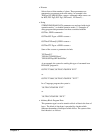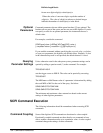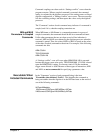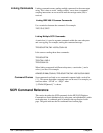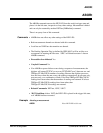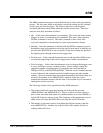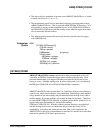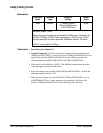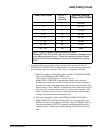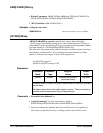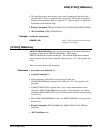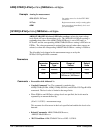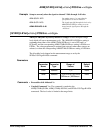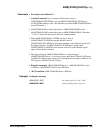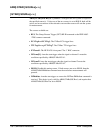
ARM:STARt:COUNt Number of
Memory
Segments
Maximum Readings
(TRIGger:STARt:COUNt)
1 1 524,288
2 2 262,144
3 - 4 4 131,072
5 - 8 8 65,536
9 - 16 16 32,768
17 - 32 32 16,384
33 - 64 64 8,192
65 - 128 128 4096
NOTE: If the non-volatile mode of memory is enabled
(MEMory:BATTery:STATe ON), then all of the maximum reading counts
shown above decrease by four. These four memory locations in each
segment hold the data necessary to recover all readings after a power
failure.
• Normally, when only post-arm readings are specified, an error will occur if
ARM:COUNt * TRIG:COUNt exceeds memory size, since post-arm data would
be overwritten if this were allowed. There are two exceptions to this rule.
a. The first exception is when the local bus is enabled (VINS:LBUS:MODE
GEN), and VINStrument:LBUS:FEED is the
A/D converter ("CONVerter:xxx"). In this case, an
ARM:COUNt * TRIG:COUNt greater than memory size is allowed.
Readings sent out directly over the local bus are also routed to memory at
the same time, and counts greater than memory size simply overwrite older
data in memory. Thus a FETCh? command will return a historical record of
what was sent over the local bus in the last "memory size" transfers. This
block of readings returned will be in chronological order, with the oldest
readings first and the most recent readings last.
b. The second exception is when either TRIGger:STARt:COUNt INF or
ARM:STARt:COUNt INF has been specified. It is assumed in this case
that the user knows data is being overwritten. After the ABORt is done to
stop the measurement, a FETCh? command would bring back the entire
memory contents, with the most recent readings at the end of the block of
data.
ARM[:STARt]:COUNt
ARM Subsystem Command Reference 189



